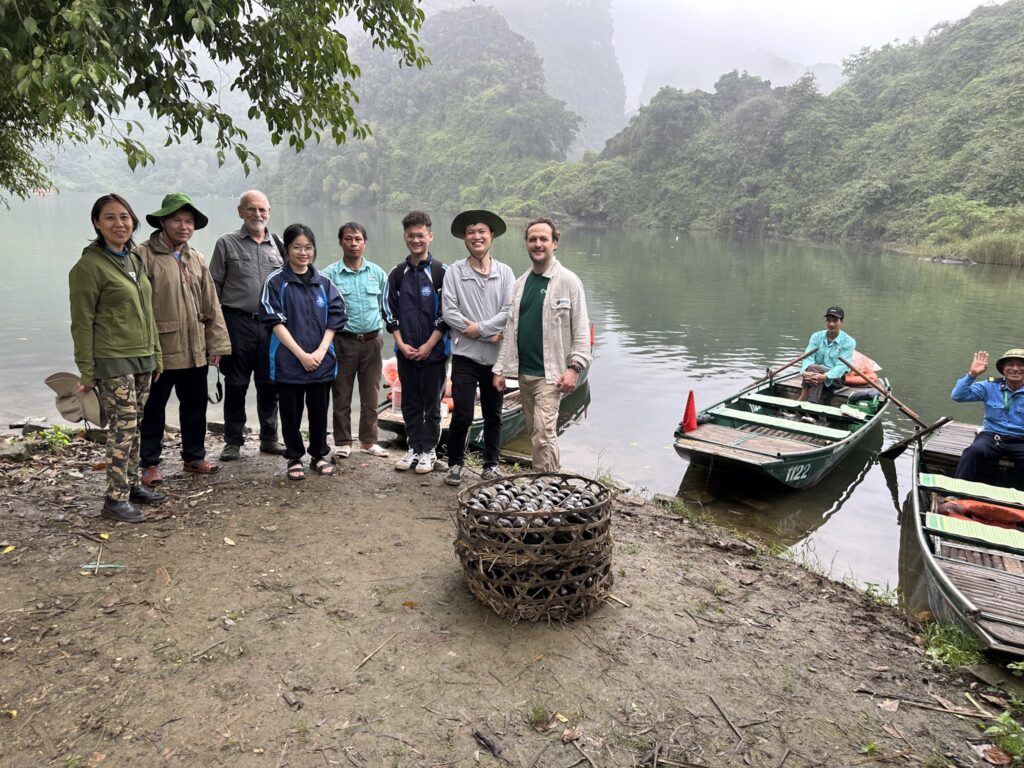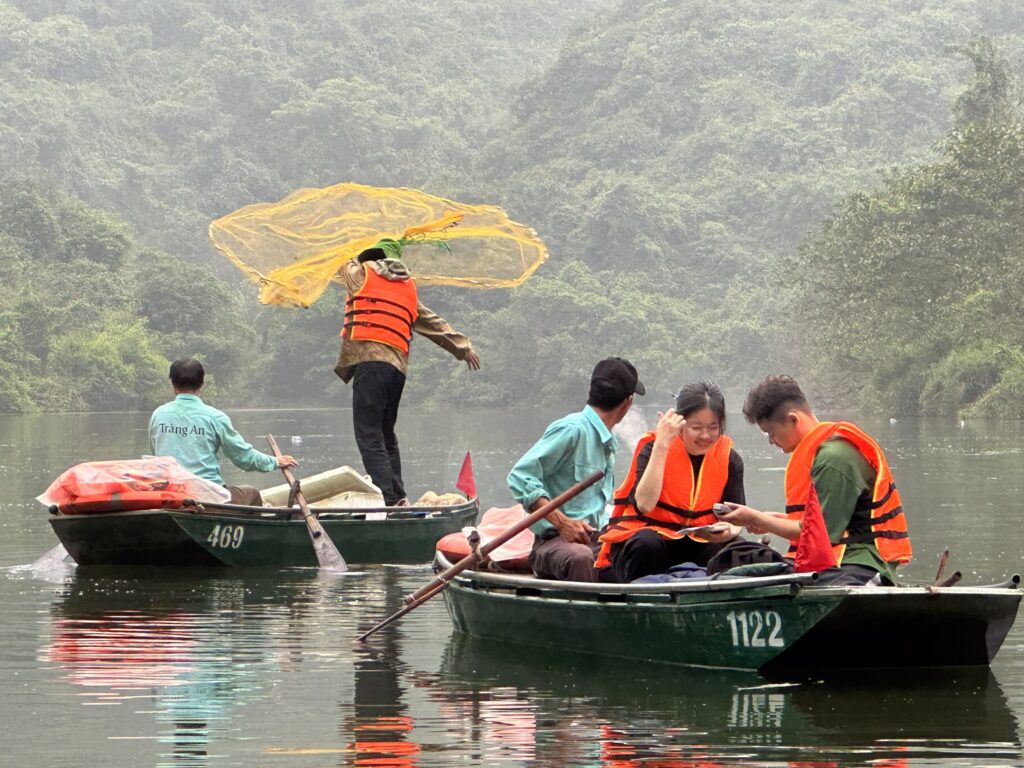Trang An Scenic Landscape Complex in Ninh Binh province, Vietnam, is a place of extraordinary natural beauty, recognized as a UNESCO World Heritage Site, celebrated for its breathtaking karst landscapes and rich cultural history. Besides, beneath the tranquil waters of this scenic landscape lies another wonder — a diverse and delicate aquatic ecosystem. Among the most critical components of this ecosystem is its diverse fish population, which plays a pivotal role in maintaining the ecological balance.
In 2024, a comprehensive fish survey, sponsored by the Zoological Society for the Conservation of Species and Populations (ZGAP), was conducted to better understand and protect this vital part of Trang An’s aquatic ecosystem. The research, carried out by Three Monkeys Wildlife Conservancy (TMWC) and Hanoi National University of Education (HNUE), identified a total of 39 fish species across three main areas: Trang An Core, Tam Coc, and Trang An Surrounding.

Survey team at Trang An
Fish play an essential role in sustaining aquatic ecosystems. They regulate food chains, contribute to nutrient cycling, and help maintain the ecological balance. However, the fish populations in Trang An are under increasing threat from pollution, habitat degradation, and invasive species. The study, led by experts from the Three Monkeys Wildlife Conservancy (TMWC) and Hanoi National University of Education (HNUE), cataloged 39 fish species across three areas: Trang An Core, Tam Coc, and Trang An Surrounding.
The survey revealed both encouraging and concerning results. While the diversity of species remains high — particularly in the Tam Coc area — invasive species and water quality issues present significant challenges.

Collecting samples of the team
Among the most alarming findings was the proliferation of invasive fish species such as Oreochromis mossambicus (Mozambique tilapia) and Pterygoplichthys sp. (armored catfish). These species, not native to the area, are outcompeting local fish, threatening to disrupt the delicate ecological balance. The invasive Mozambique tilapia, in particular, was found in almost all surveyed locations, underscoring the urgency of intervention.
The study also assessed water quality across the three research sites. In several areas, notably Trang An Surrounding, water pollution was found to be a significant issue. Low dissolved oxygen levels, likely a result of pollution from nearby agricultural and urban activities, threaten the health of both fish populations and the overall aquatic ecosystem.
Species Distribution: Tam Coc had the most diverse fish population, while Trang An Core had the lowest species diversity. The research identified both common and rare species, including vulnerable species like Cyprinus carpio (common carp) and Channa orientalis (snakehead fish).
Invasive Species Impact: The invasive species Oreochromis mossambicus, Gambusia affinis (mosquitofish), and Pterygoplichthys sp. were found at multiple sites, threatening the native fish populations and altering the natural ecosystem dynamics.
Water Quality Degradation: Certain areas, such as Trang An Surrounding, showed signs of water quality degradation, with pollution levels in some places exceeding safe thresholds. This is particularly concerning as fish species are highly sensitive to water quality changes.
Implementation analysis right after gathering samples
The conservation of fish diversity in Trang An is not just the responsibility of scientists or conservation organizations — it requires a collective effort from local communities, government agencies, and visitors to the area. Regular monitoring, data collection, and sustainable practices will be crucial in protecting this delicate ecosystem for future generations.
Trang An’s underwater world is just as remarkable as its towering cliffs and winding rivers. By taking immediate action to protect its fish populations, we can ensure that this unique heritage site continues to thrive, both above and below the surface.
READ MORE
© 2024. Three Monkeys Wildlife Conservancy.
NGO with headquarter in Belgium (registration number: 0741.669.522)
